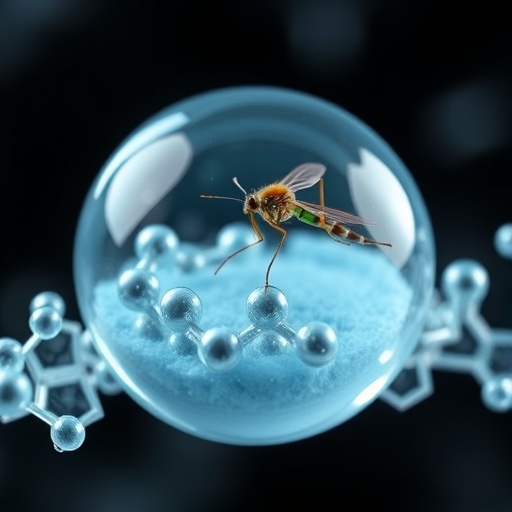In the relentless fight against malaria, a devastating disease responsible for over 600,000 deaths annually—predominantly children in Sub-Saharan Africa—a breakthrough in drug design offers a glimmer of hope. Researchers at the University of California, San Francisco (UCSF) have ingeniously restructured a promising class of antimalarial compounds to overcome one of the biggest hurdles in drug administration: poor solubility. This fundamental chemical remodeling preserves the drug’s potency against resistant malaria parasites while transforming it into a form more amenable to oral delivery, a critical feature for effective, large-scale treatment programs.
Malaria, caused by the Plasmodium parasite, has long confounded medical science due to its evolving resistance to the drugs designed to eradicate it. The fight began in earnest in the mid-20th century when quinine-derived medications such as chloroquine revolutionized treatment. However, the parasite’s adaptive capabilities soon rendered many frontline therapies ineffective, leading to a persistent cycle of drug resistance. The discovery of artemisinin from sweet wormwood provided a fresh pharmacological arsenal, spawning combination therapies that became the mainstay of treatment globally. Yet, the parasite’s relentless march towards artemisinin resistance, particularly its emergence in Southeast Asia and now its alarming spread into Africa, threatens to unravel decades of progress.
Among the hopeful successors was artefenomel, a synthetic analog inspired by artemisinin, conceptualized to deliver a potent cure in a single dose. This novel candidate promised a major leap forward; unlike the customary artemisinin-based combination therapies (ACTs), which require patients to adhere to a multi-day regimen, artefenomel’s ideal was a simplified, one-pill solution that could dramatically improve compliance and reduce treatment failure rates. Early laboratory and animal studies showcased its formidable efficacy against both drug-sensitive and resistant strains of malaria.
Nevertheless, clinical trials encountered a significant roadblock rooted in drug chemistry. Artefenomel’s molecular symmetry contributed to poor solubility, causing the compound to form stubborn crystals that resisted dissolving in liquids. Consequently, patients had to ingest the drug as a high-maintenance oral suspension that required vigorous shaking and immediate consumption. This cumbersome form factor not only diminished patient adherence, especially among children who struggled with the unpleasant preparation and taste but also complicated combination therapy formulations, limiting the drug’s utility.
This clinical impasse sparked the UCSF team’s innovative approach: altering the molecular symmetry of artefenomel to enhance its dissolution properties without compromising its antimalarial activity. Highly symmetrical molecules are prone to dense crystal packing, reducing solubility and thus bioavailability. By deliberately introducing asymmetry into the chemical structure, the researchers aimed to disrupt this packing tendency. Their initial reengineered molecules demonstrated near-instantaneous solubility in aqueous solutions—a striking contrast to the original compound’s stubborn nature.
With this foundational chemical insight, the team embarked on a rigorous synthesis-and-testing cycle. They evaluated the new molecules against cultured malaria parasites, subsequently advancing to animal models. Importantly, the compounds were tested not only against standard parasite strains but also against artemisinin-resistant isolates obtained from malaria patients in Uganda, where resistance poses a particularly severe threat. Results were promising: the redesigned molecules matched or exceeded artefenomel’s potency, demonstrating robust efficacy against the resistant parasites, which are impervious to existing therapies.
This research underscores the power of small yet strategic molecular modifications to resolve clinical drug development challenges. By prioritizing solubility—an often overlooked but critical physical property in drug design—the UCSF chemists have unlocked new possibilities for administering potent antimalarial agents with greater ease, stability, and patient acceptability. Such advances are especially vital in low-resource settings where treatment adherence directly correlates with therapeutic success and public health outcomes.
The implications extend beyond malaria. The innovative strategy applied here—altering molecular symmetry to improve solubility without sacrificing bioactivity—could serve as a blueprint for reviving other pharmaceuticals that faltered due to formulation difficulties. This blend of sophisticated synthetic chemistry and pragmatic drug development addresses a fundamental bottleneck hindering many promising candidates from reaching the clinic and ultimately, the patients who need them most.
With artemisinin resistance advancing into the heart of Africa, the urgency for effective new antimalarials has never been greater. Drug development timelines stretching over years or decades often lag behind the fast-moving evolution of parasites. The promise of this remolded class of compounds lies not just in their direct antimalarial effects but also in the feasibility of rapidly deploying them in combination with other drugs, potentially curbing the spread of resistance more effectively than current treatment regimens.
UCSF’s collaboration across pharmaceutical chemistry, medicine, and parasitology represents a multidisciplinary approach vital to tackling the complex evolutionary landscape of infectious diseases. Their work injects renewed optimism into malaria pharmacotherapy—an optimism grounded in precise molecular engineering and practical considerations for real-world application.
As this novel generation of antimalarial drugs moves toward clinical readiness, the scientific and global health communities will watch closely. Success could signal a turning point, transforming malaria from one of the deadliest parasitic diseases into a manageable condition with accessible and effective treatments. Such a shift would reverberate across continents, saving lives and stabilizing health systems burdened annually by millions of malaria cases.
In the crucible of modern drug discovery, UCSF’s breakthrough exemplifies how chemical ingenuity can conquer biological complexity and practical challenges alike. Their work stitches together the molecular, clinical, and societal dimensions of malaria treatment, moving a step closer to a world where the disease’s deadly grip is finally loosened.
Subject of Research: Malaria drug development and chemical modification to overcome drug resistance and solubility challenges.
Article Title: Chemists Remodel Malaria Drug Molecules to Enhance Solubility and Combat Resistance
News Publication Date: August 8, 2024
Web References: https://profiles.ucsf.edu/adam.renslo; https://profiles.ucsf.edu/philip.j.rosenthal; https://www.ucsf.edu; https://www.ucsfhealth.org; https://urldefense.com/v3/__https://10.0.4.102/sciadv.ads9168__;!!LQC6Cpwp!rY7KlMQFjF4XuiL6TPUEB4b74TYuhRtDdptaN1Uc3IQWyrxRVygsw7KroBp8YCqUm5aRQpgvmPX-lqdm1LZC39CnCEI%24
References: Published in Science Advances, August 8, 2024; NIH funding AI075045, AI139179, AI105106, and CA260860.
Keywords
Malaria, Drug Resistance, Artemisinin, Artefenomel, Pharmaceutical Chemistry, Clinical Trials, Parasites, Drug Development, Molecular Chemistry, Infectious Diseases, Plasmodium, Solubility




